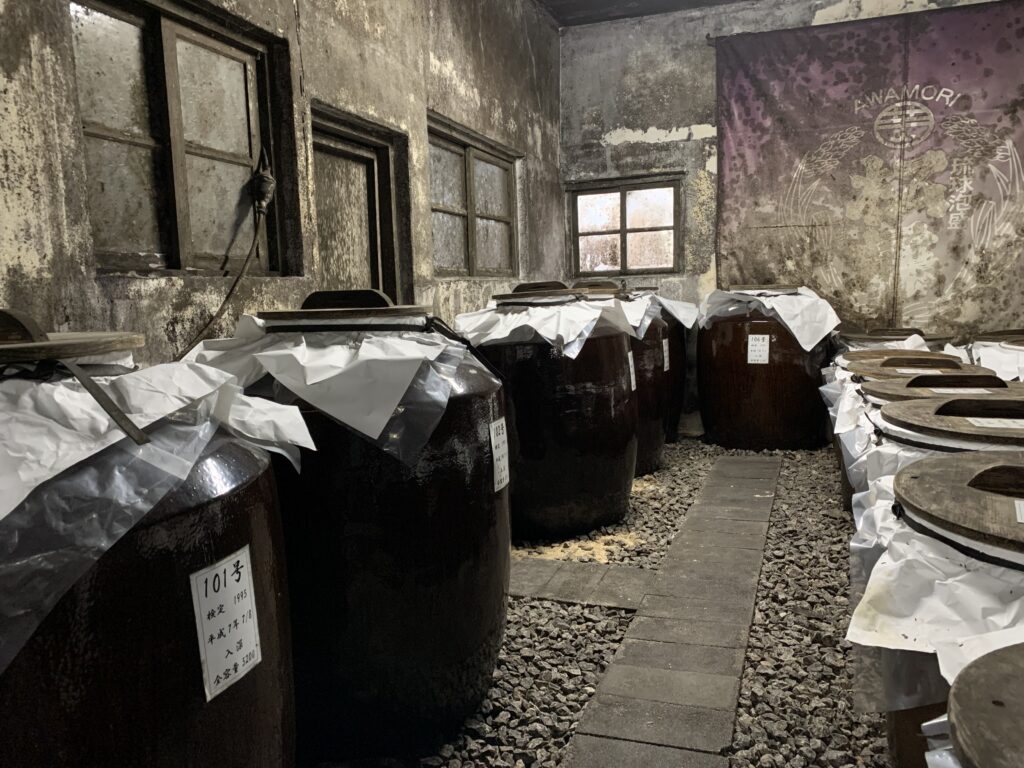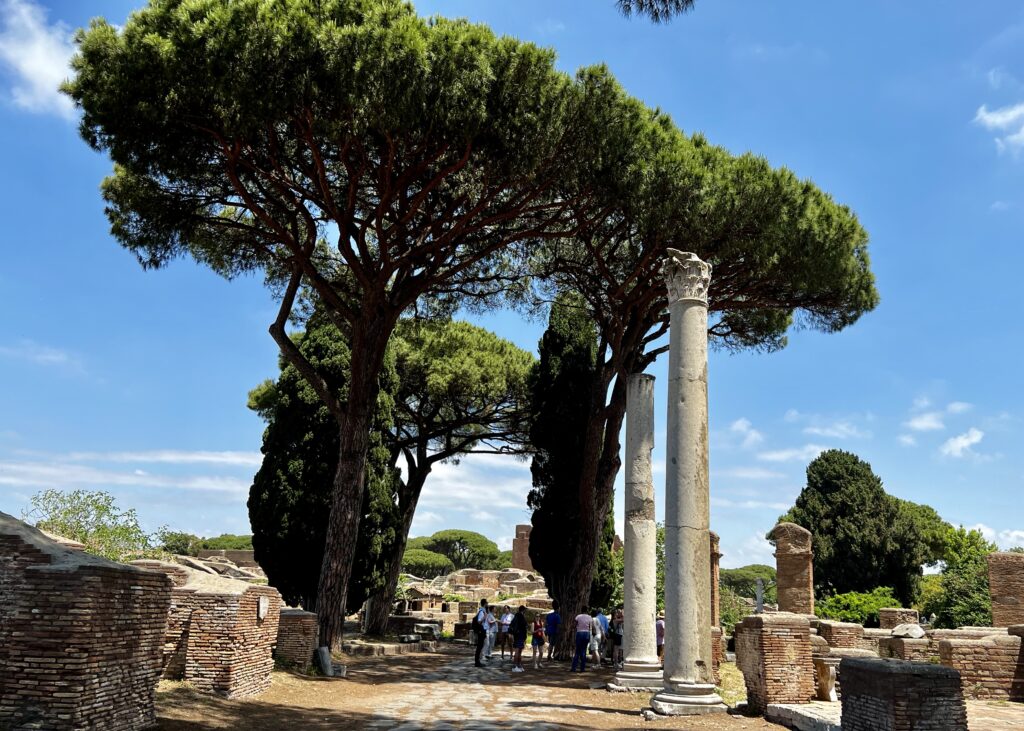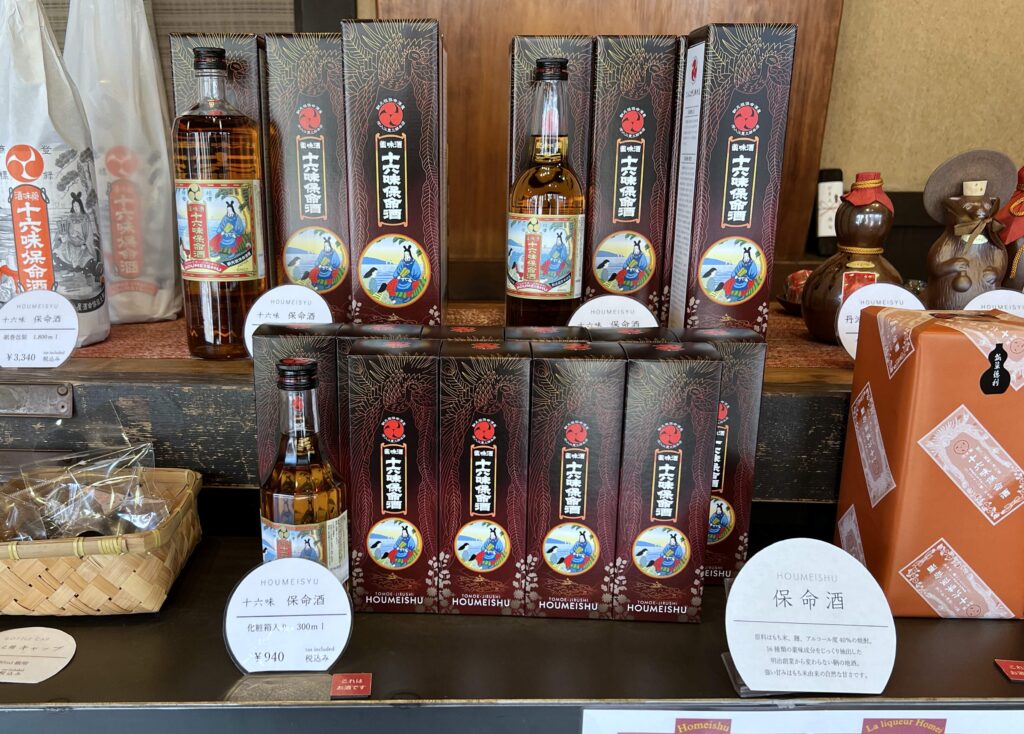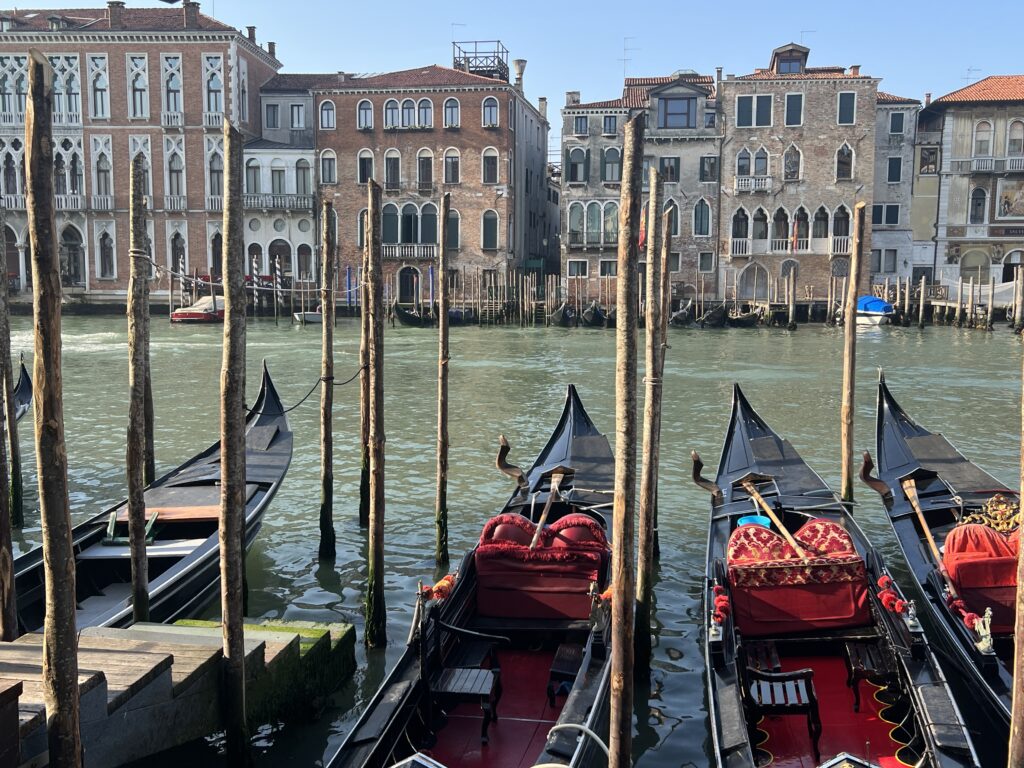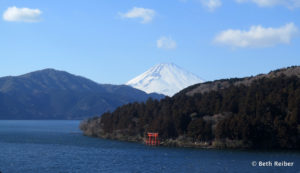The sky was a striking blue and the air was hot and dry as my three sisters and I bounced along rutted dirt roads in a pickup truck, surrounded by an arid landscape dotted with scrub brush, cactus, agave, the occasional palm tree, olive groves, barbed wire fences supported by sticks, and row after row of vineyards. We were on a mission: to sample wine in Mexico’s Valle de Guadalupe wine region.

Wine in Mexico? Let’s face it. If you’re familiar with Mexican wine, you’re ahead of the curve. Your favorite Mexican restaurant probably doesn’t offer it. Your local wine shop might not carry it. Even many Mexicans, traditionally consumers of beer and tequila, generally don’t drink it.
So when my sister living near San Diego suggested Valle de Guadalupe for a sisters’ reunion, I didn’t have a clue what she was talking about. But she sure did. Turns out that the Valle de Guadalupe wine region, located in Baja California just 90 miles south of San Diego, is home to some 100 wineries and produces 90% of Mexico’s wine. Southern Californians and international travelers in the know have been flocking there for more than a decade.
No wonder the region is host this year of the International Organization of Vine and Wine’s 43rd World Congress, attracting 1,000 wine professionals from more than 40 countries. In other words, word is out.
What makes Mexico’s Valle de Guadalupe wine region special
Although every state in the U.S. has wineries (including my home state of Kansas), most don’t have a long history for producing wines. I was therefore surprised to learn that northern Baja’s wine history predates most wine regions in the United States, mostly because of Spanish conquistadors and missionaries. In the Guadalupe Valley area, Jesuit priests started growing grapes in 1791 in Valle de Santo Tomas, followed in 1834 by Dominican priests at nearby Northern Mission of Our Lady of Guadalupe. In fact, the first winery of the Americas is thought to have been established by a Spaniard in the northern Mexican state of Coahuila in 1597.
Those Spaniards knew what they were doing. Valle de Guadalupe’s proximity to the Pacific Ocean and its dry, desert-like soil of decomposed granite give it a Mediterranean-like climate especially suited to cultivating and harvesting grapes.
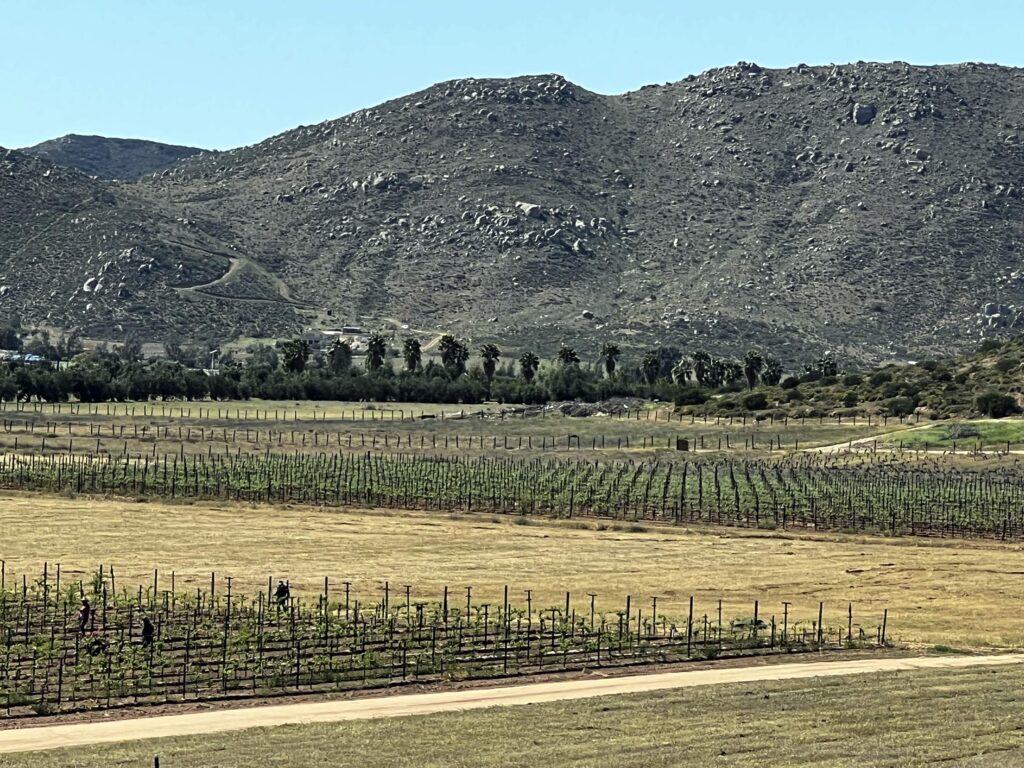
To learn about the history of wine in general and in Baja in particular, one of our first stops was the Museo de la Vid y el Vino, which also has the convenience of an adjacent tourism kiosk where you can pick up a map of wineries. Wineries range from sophisticated operations to boutique wineries, each with its own personality. Some require reservations for tastings, while others will accommodate you if there’s room. In any case, it’s good to have a plan, and if you plan to do a lot of sampling, a chauffeured car as well. Most likely your accommodation can arrange one for you.
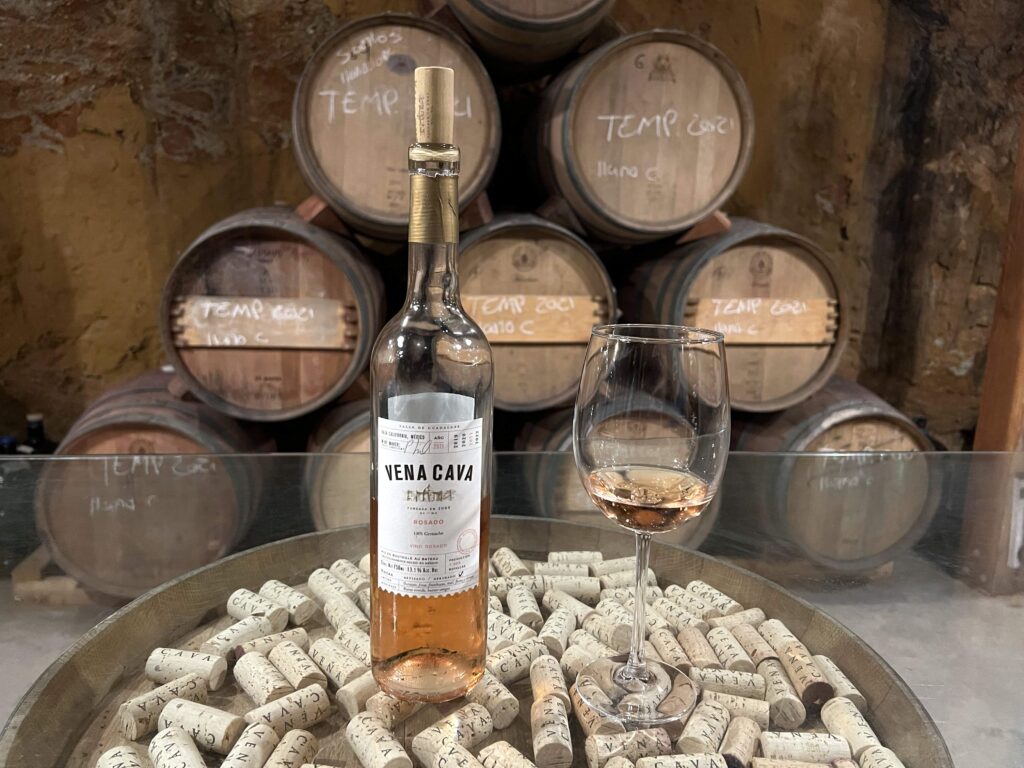
It goes without saying that you’ll also learn about the Valle de Guadalupe wine region simply by visiting wineries, most owned by Mexicans but also by visitors who fell in love with the place and stayed. Every winery has its own story and winemakers are passionate about the wines they produce. Although some wineries produce wines containing just one grape (called a varietal), blends that contain several grapes are hugely popular and are what make tastings here especially fun. Reds are usually aged in French or American oak, while whites are generally placed into steel tanks.
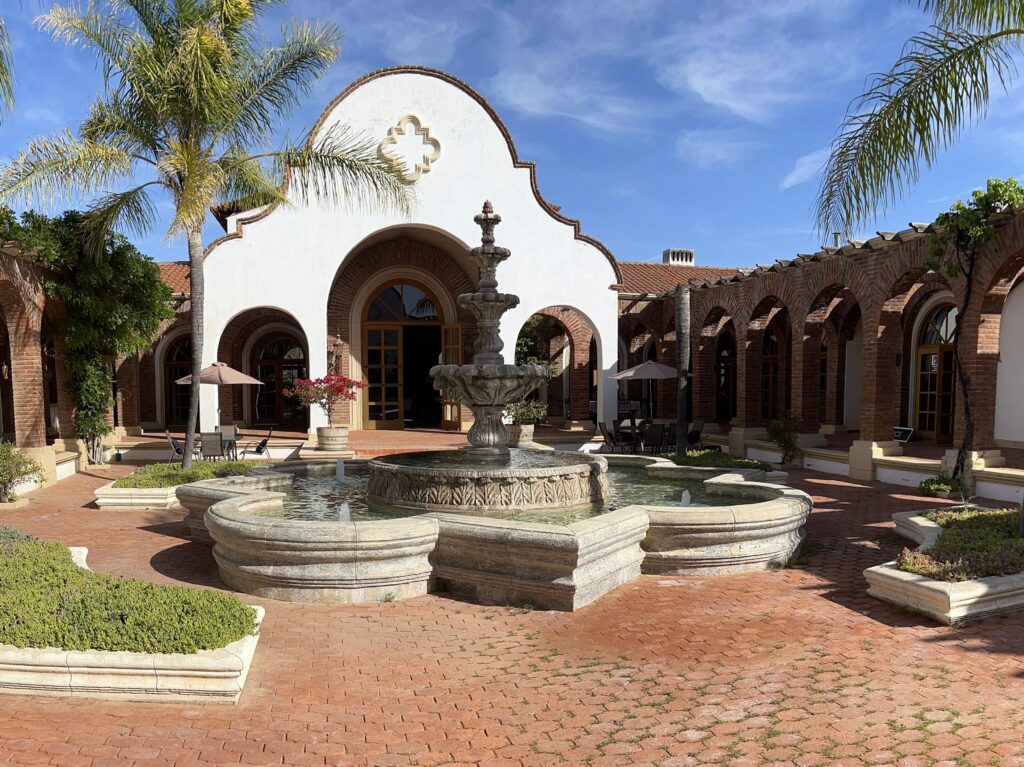
Adobe Guadalupe Vineyards and Inn
Accommodations were pretty scarce in Valle de Guadalupe when Tru Miller and her late husband Don Miller decided to open a winery and an inn 25 years ago. In fact, Tru Miller said, there were only three wineries in the area and no place to stay. Now there are luxury hotels as well as a scattering of boutique accommodations and little houses popping up like mushrooms. That makes Adobe Guadalupe Vineyards and Inn with its six guestrooms a quaint old-timer. Hearty breakfasts are served in a spacious country kitchen and there’s a swimming pool for a cool down after a hot day of sampling.

Adobe Guadalupe also offers tastings, a food truck, a shop selling its wines, olive oil and other local products, and 25 Azteca horses available for rides among the vineyards. All its wines are blends named after angels, with its Arc Angel Uriel a blend of five grapes (grenache, tempranillo, cinsault, voignior, mourvedre and syrah) good for pairing with spicy seafood. Gabriel, made with 50% cabernet and blended with merlot and malbec, goes well with mole, which is also sold at its shop.
Monte Xanic
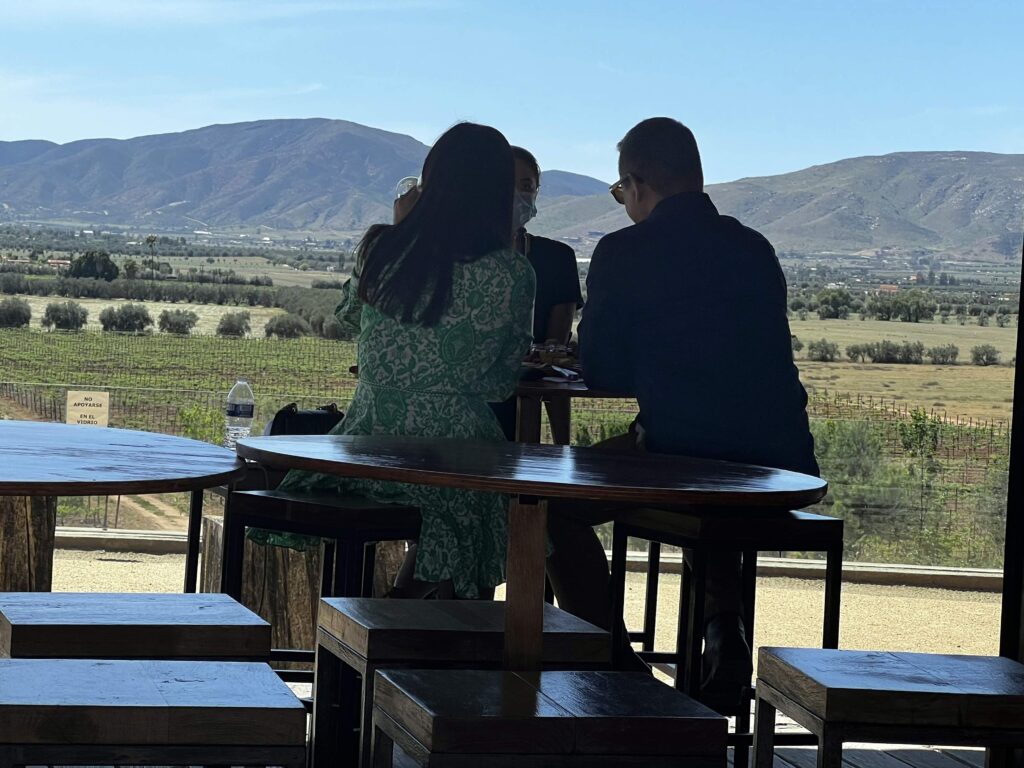
Monte Xanic is one of the oldest wineries in Valle de Guadalupe. It was founded 35 years ago by a group of five friends and is now one Mexico’s most well-known and award-winning wineries. Its 490 acres of vineyards (including 74-year-old vines originally planted by Russian immigrants) produce 100,000 cases of wine a year (about 1.2 million bottles). Tours take in its cutting-edge fermentation room, bottling section and cellar dug into a granite hillside.
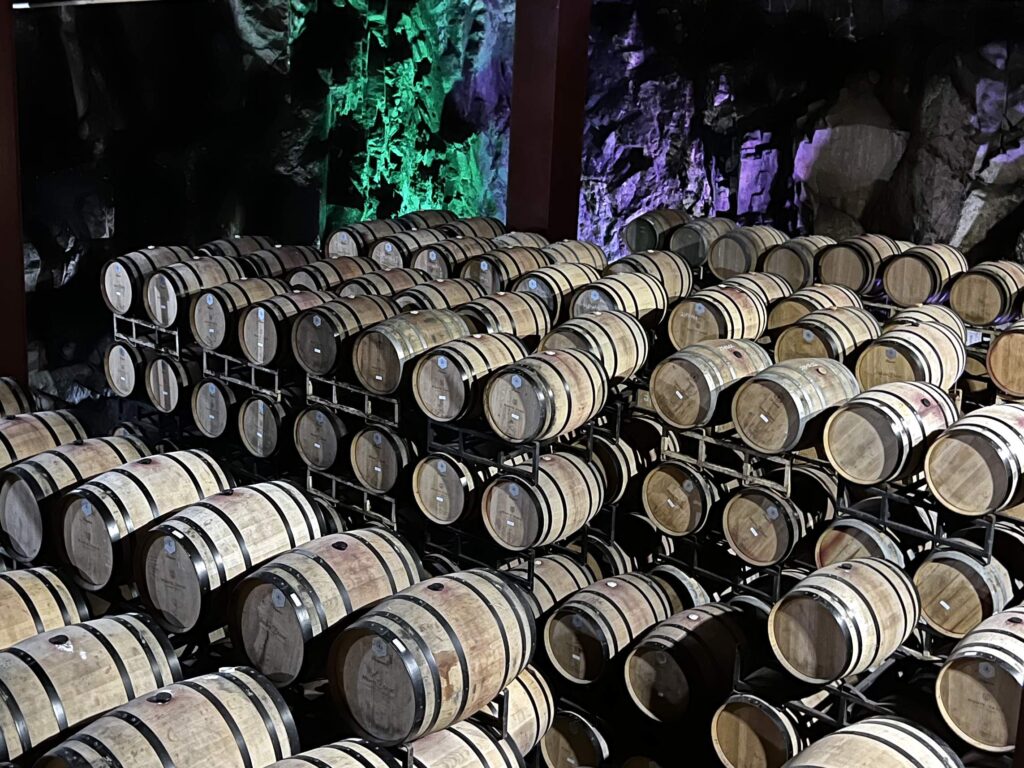
Wine tastings take place on a shaded patio or glass-enclosed room with sweeping views over a palm-fringed artificial lake toward boulder-strewn hills in the distance. Although blends are popular, including a Rose that’s a hit with bachelorette parties, I was especially taken by its nebbiolo single-grape varietal. Our sommelier said that Mexico’s Valle de Guadalupe wine region was the second-largest producer of the nebbiolo grape in the world, after northern Italy. Reservations are required to visit Monte Xanic.
Vena Cava
Vena Cava calls itself “the hippest winery in Mexico.” I’m no judge of that, but it does have the most interesting architecture of any winery I saw, and its informal food truck called Troika is alone worth the visit. Eileen and Phil Gregory (he’s from Manchester, she’s from New York) stayed at Adobe Guadalupe before deciding to open a winery of their own in 2005. With only 12 acres of vineyards, they also buy grapes, all of it organic, for their annual 42,000 bottles and 30 labels of wine.
Although there are varietals, like the sauvignon blanc, rosado (100% grenache) and cabernet sauvignon we were served, I also liked Phil’s Blend, which contained the grapes of cabernet sauvignon, syrah and nebbiolo. As with the other wineries we visited, experimentation is the name of the game. I imagine that’s also what makes being a vintner in the Valle de Guadalupe wine region so much fun.
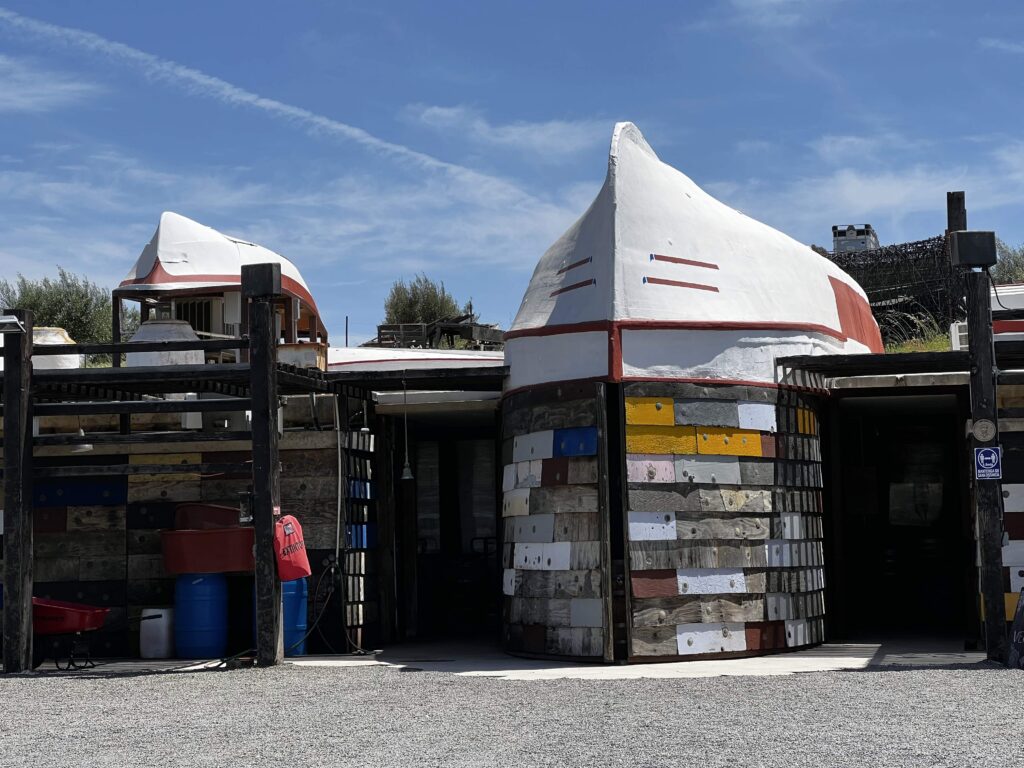
Vena Cava’s innovative architecture includes overturned fishing boats forming roofs, repurposed optical lenses serving as tiny portals of light, and other recycled materials. Our sommelier, a young Mexican woman, told us that Valle de Guadalupe had changed so much in the past decade due to new development, we wouldn’t believe it was the same place if we saw a photograph from 10 years ago. But I believe it, considering that there were just 18 wineries in 2000 and judging from the new construction we saw just driving around. She added that the area’s recent development also gave her a good job with good pay, so she planned to live here for the rest of her life.
Solar Fortun
Solar Fortun was my favorite winery, possibly because it was our first tasting but also because it has a very laid-back, welcoming vibe, including hammocks that might convince you to just chuck it and stick around for the rest of the day. It got its start after two married physicists moved here in 1985, bought land in the 1990s when it was still cheap and and opened for business at the end of a dirt road in 2008.
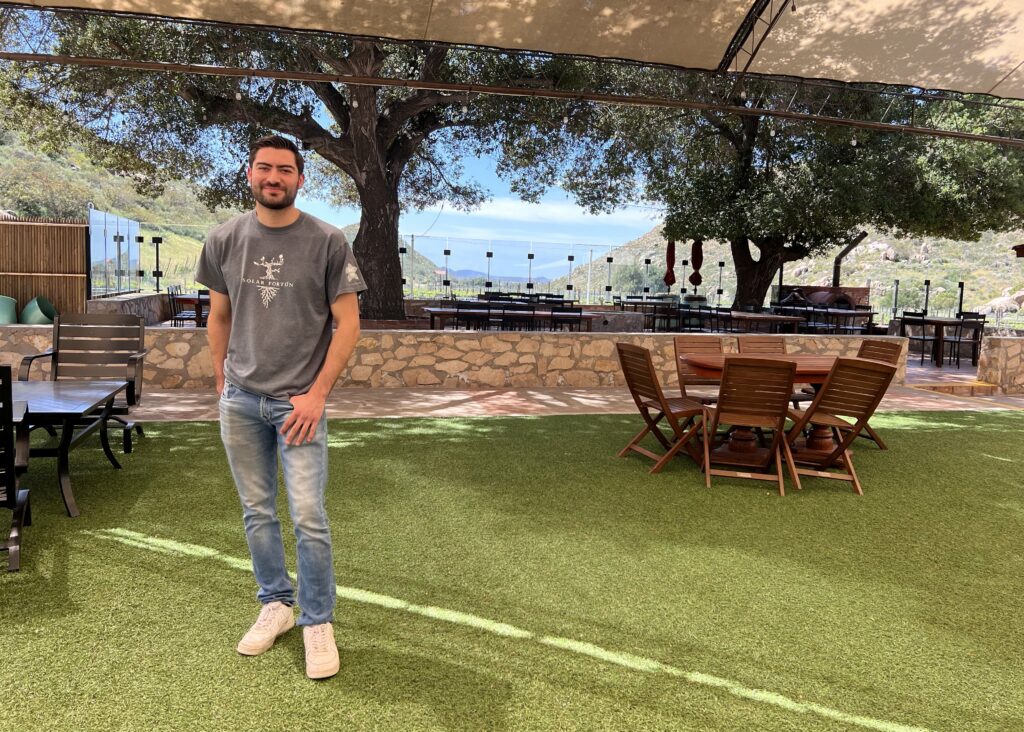
The boutique winery is now under the second-generation helm of two brothers, Javier Lopez and winemaker Santiago Lopez, who studied viticulture and oenology at UC Davis in California. It’s an estate winery, meaning all the grapes used in its wine production come from its 32 acres of vineyards. An outdoor restaurant offers ceviche, yellowfin tuna tartar, tacos, grilled steak, pasta and a cheese plate.
I opted against the hammock but we had a delightful spot under the shade of a sprawling oak while Javier explained what we were tasting (we hadn’t made a reservation, but he graciously accepted us anyway). Our first glass was a refreshing Vina en Rosa made with mourvedre grapes fermented in stainless steel. That was followed by a blend of 85% mourvedre and 15% cabernet sauvignon, aged in second-use French oak. Javier said that while mourvedre grapes usually produced a bold, red wine, the sandy soil of Guadalupe Valley made it lighter, like a pinot noir, which can’t be grown here.
Our third tasting was a varietal, petit verdot, which is usually combined in blends but in this case was aged 12 months in third-use American oak so that it could retain its fragile balance without overbearing oak tannins. Last was the winery’s flagship, a 2015 Noble Cru made with a blend of mourvedre, syrah, cabernet sauvignon and petit verdot and aged in new French oak. It’s even better, I hear, if you hold off drinking it for 15 years. That person wouldn’t be me.
Bodegas Magoni
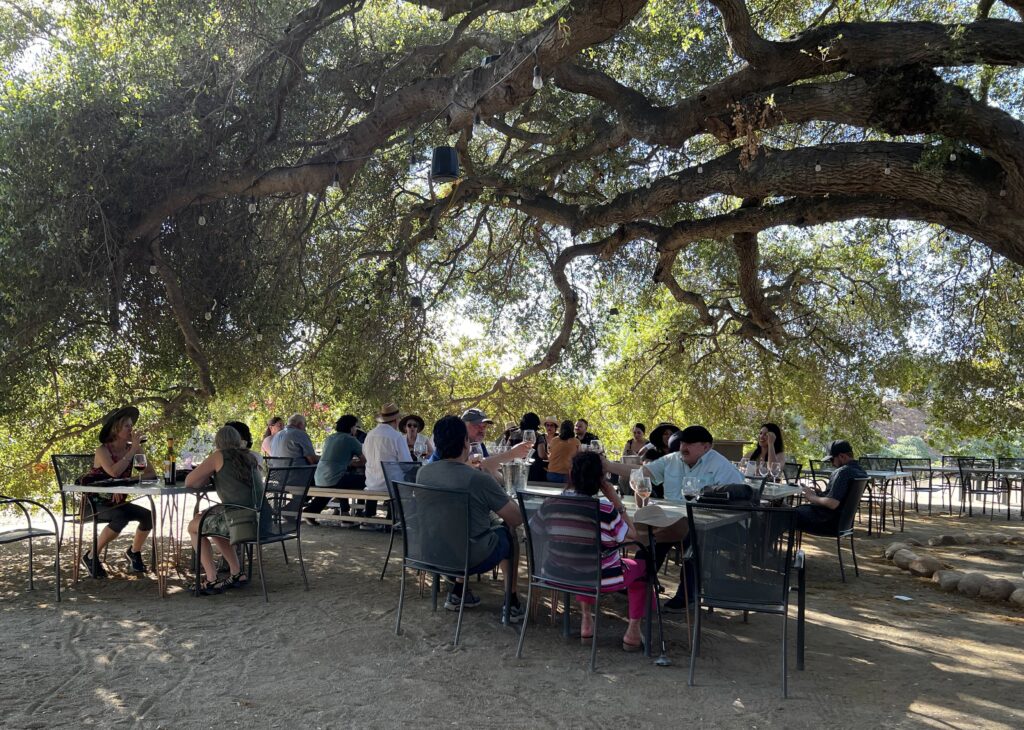
We didn’t make a reservation for Bodegas Magoni, deciding instead to simply drop by and drink a bottle of nebbiolo under the spreading umbrella of its century-old oak tree. After producing wine for private consumption for 15 years, the Magoni family decided to establish a winery in 2013. It now produces wine exclusively from its own vineyards, which include an experimental field with about 70 different grapes from around the world.
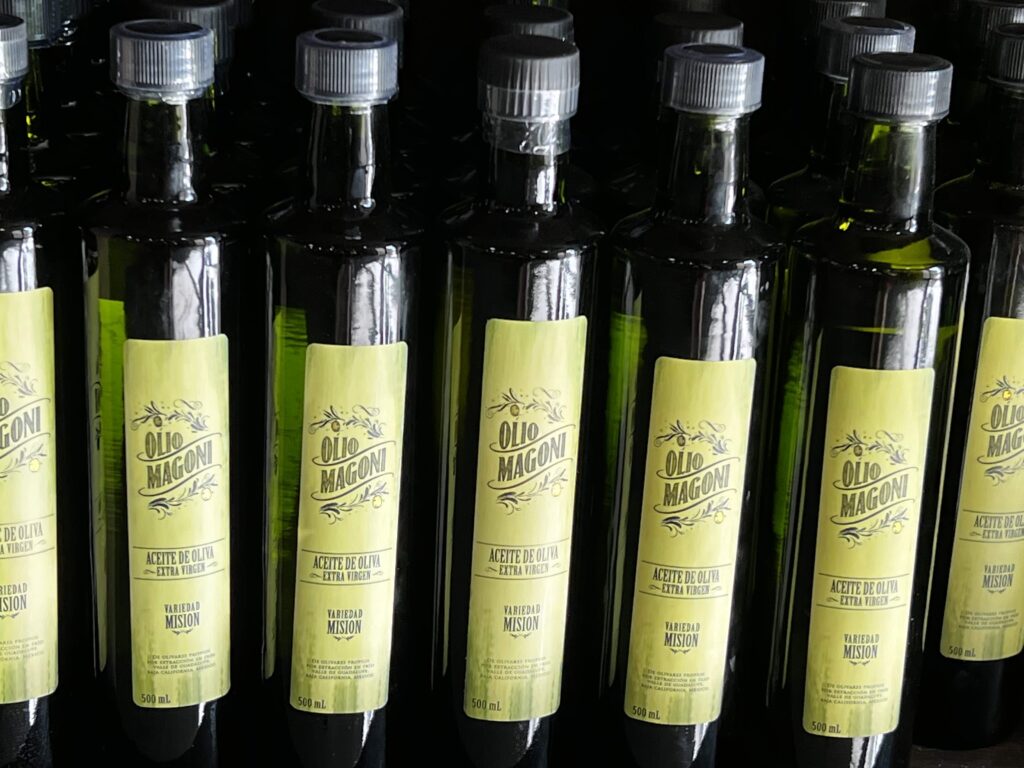
Like many wineries in the Valle de Guadalupe wine region, Magoni also sells olive oil produced from its own trees. Magoni is serious about its oil, however, with about 7,000 trees from Spain, Italy, Greece, Israel, Syria and other countries. It even has trees descended from those planted by Jesuit missionaries in Baja more than 300 years ago.
Casa Frida
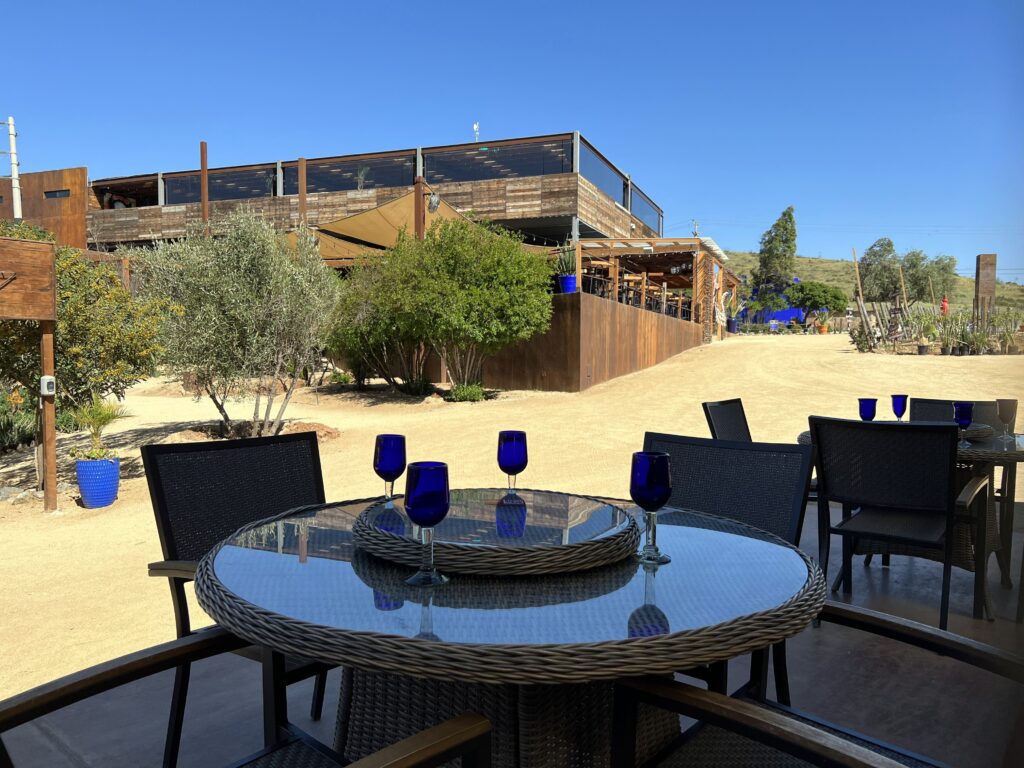
As its name suggests, Casa Frida takes its cue from Frida Kahlo with its electric-blue walls, heart-shaped vases and copies of her portraits. We stopped here for a meal at Restaurant D’Petra, where I had crusty salmon on a bed of lentils. There’s also a tasting room, a covered deck over a marshy lake, a large terrace and a rooftop bar with all kinds of mixed drinks that involve tequila, mezcal, gin and other alcoholic drinks. But really, why would you come to Mexico’s Valle de Guadalupe wine region and drink anything other than wine?
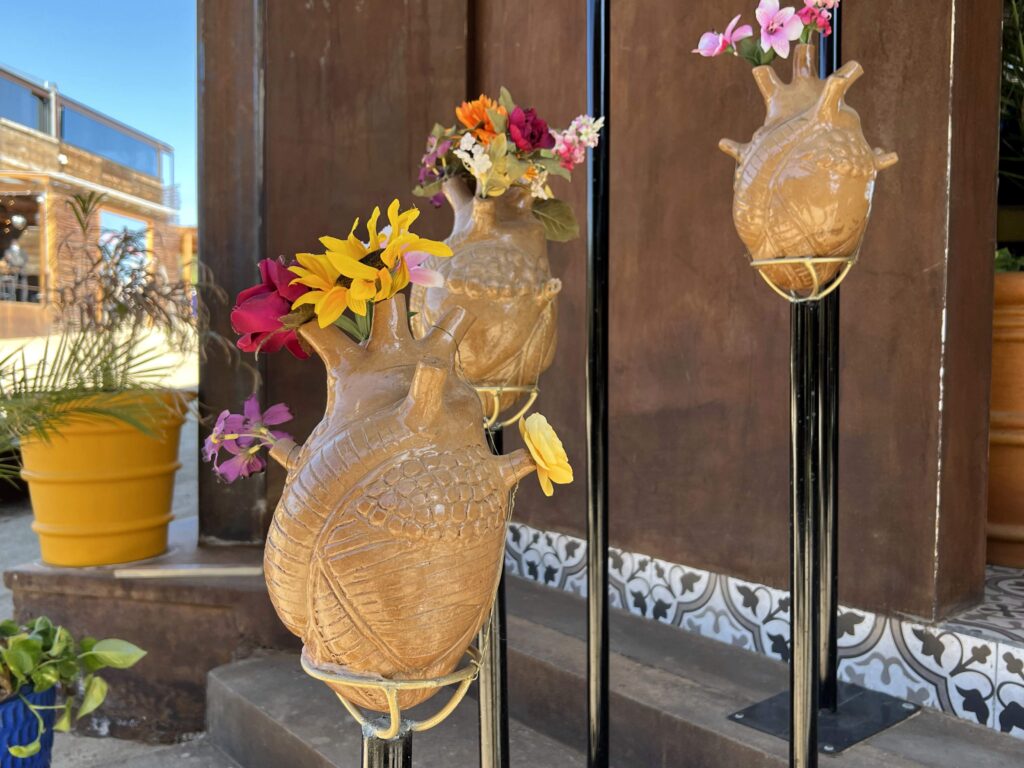
Finca Altozano
Finca Altozano isn’t a winery but rather a destination restaurant, which means you need to have a reservation. Local farms, wineries, the restaurant’s own garden and the nearby ocean provide the ingredients for its menu, which includes such delectable dishes as crispy pork belly, rib-eye steak, oven-roasted chicken and oak-grilled quail.
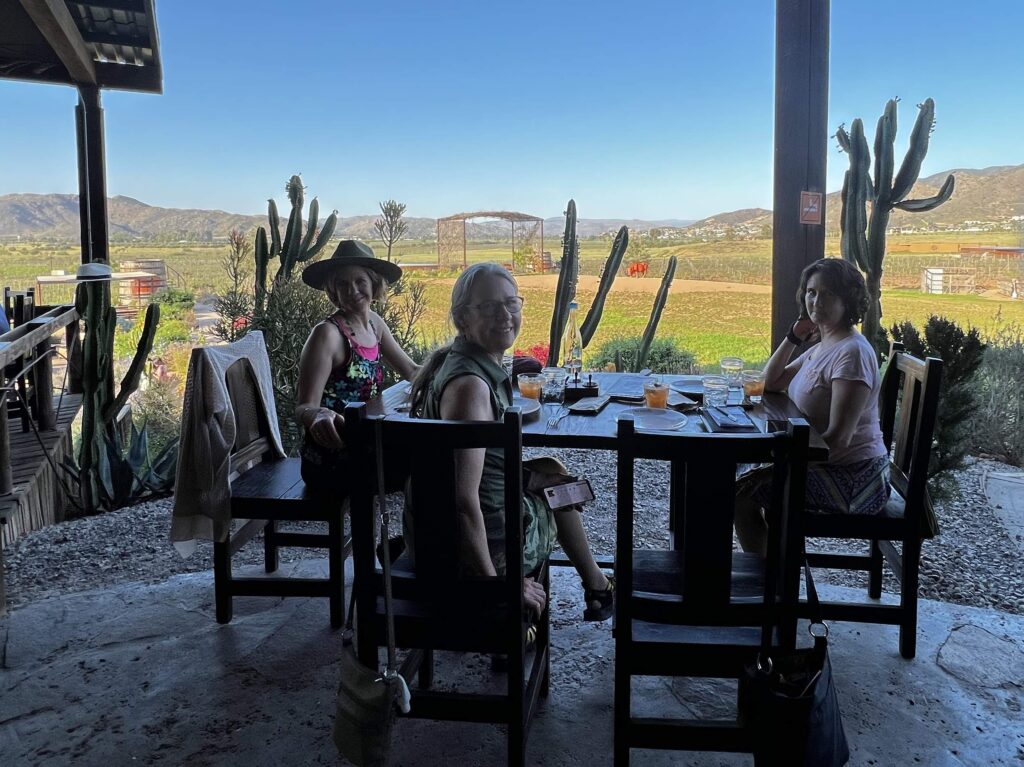
But the best part about Finca Altozano, in my opinion, is the restaurant’s covered open-air dining room complete with a couple of sleeping dogs, allowing you to gaze over its gardens, the countryside and its enclosure of friendly goats, popular with children. It’s absolutely dreamlike.
More thoughts about Mexico’s Valle de Guadalupe Wine Region
Although you can “do” Guadalupe Valley on a day’s outing from San Diego or nearby Ensenada, you’ll get more out of it if you spend the night. We stayed two nights, giving us almost three days for tastings, dining and exploring, but even that wasn’t enough. I could have stayed longer.
That said, increased tourism has naturally led to more development and growth, impacting Valle de Guadalupe’s fragile ecosystem. Rainfall is so scarce it’s practically nonexistent, which means a growing number of vineyards must be irrigated with more and more water imported from other regions in Mexico. More development also means more night light pollution. Once you’ve seen the valley’s starry sky, you’ll want it to remain that way forever. I found this article useful for explaining some of the issues and challenges facing the region.
Note that most wineries are open from about 10am or 11am to 5pm. Even if you don’t make reservations for all the wineries you’d like to visit, you should still check websites for open hours and days when planning your itinerary. Solar Fortun, for example, is open only on Friday, Saturday and Sunday.
Although you might be tempted to bring back a case of wine, note that U.S. customs allows only one bottle per adult duty free. That means you’ll have to pay duty and taxes on more than the one-bottle quota, which of course might be worth it. Otherwise, just enjoy your time in Valle de Guadalupe for those fleeting hours that will pass all too quickly. Actually, that could be a recipe for life.
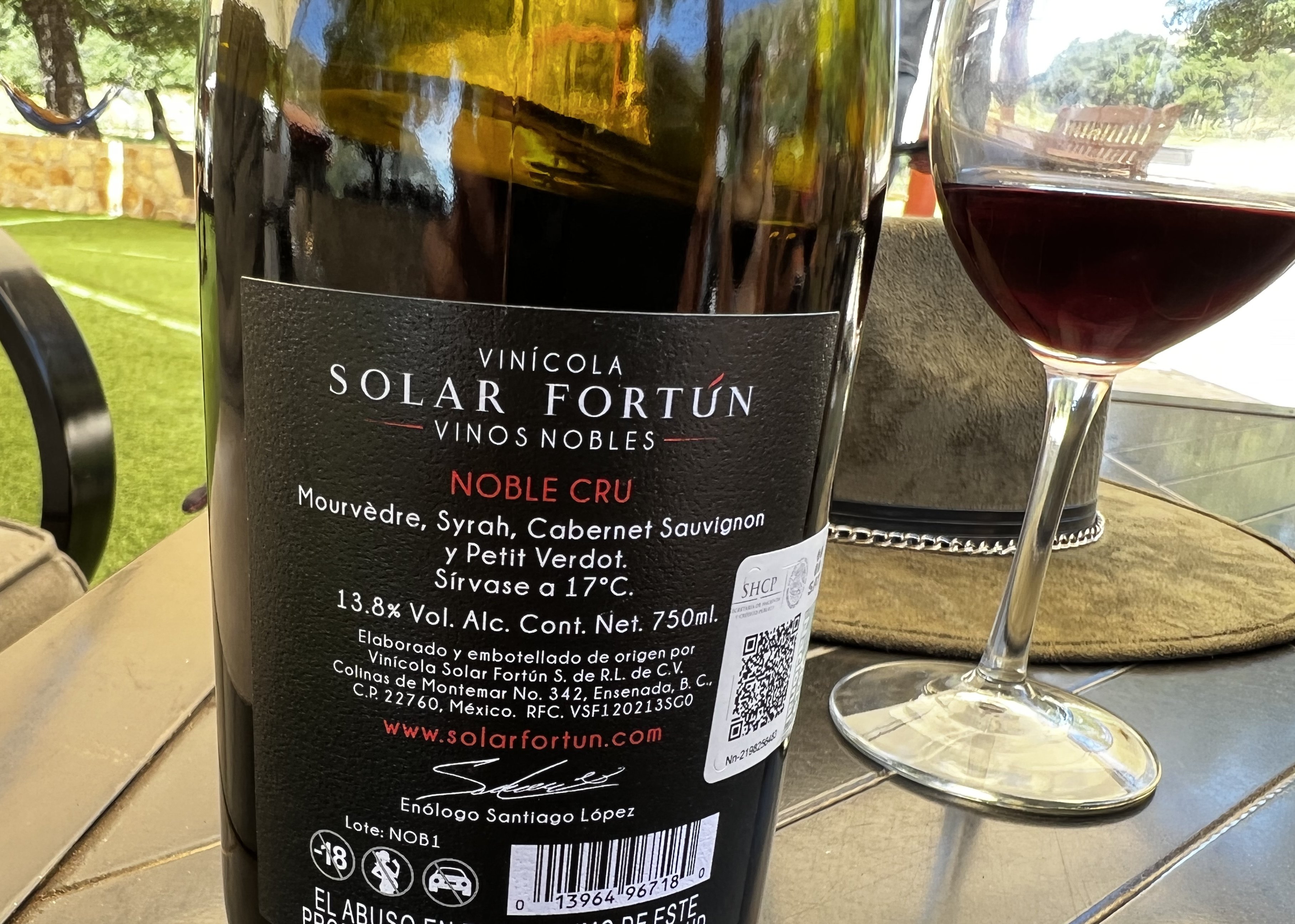
If later you start pining for a particular vintage, check the offerings on the website Patrick Neri Selections. It specializes in Mexican wines, including those from Vena Cava, Monte Xanic and Solar Fortun. It also sells wines from area wineries we didn’t have time to visit, including the two oldest: L.A. Cetto, founded in 1928, and Santo Tomas, in business since 1888.
So many wineries, so little time.
For more information on Valle de Guadalupe, its history and its wines, see my article Guide to Valle de Guadalupe, the Napa Valley of Mexico published in 10Best.com/USAToday. Below is my article, “Sisters’ Trip to Valle de Guadalupe Baja Californina,” originally published in gettingontravel.com, which has since gone under.
For more on wine, see my article Missouri’s Hermann Wine Trail.
